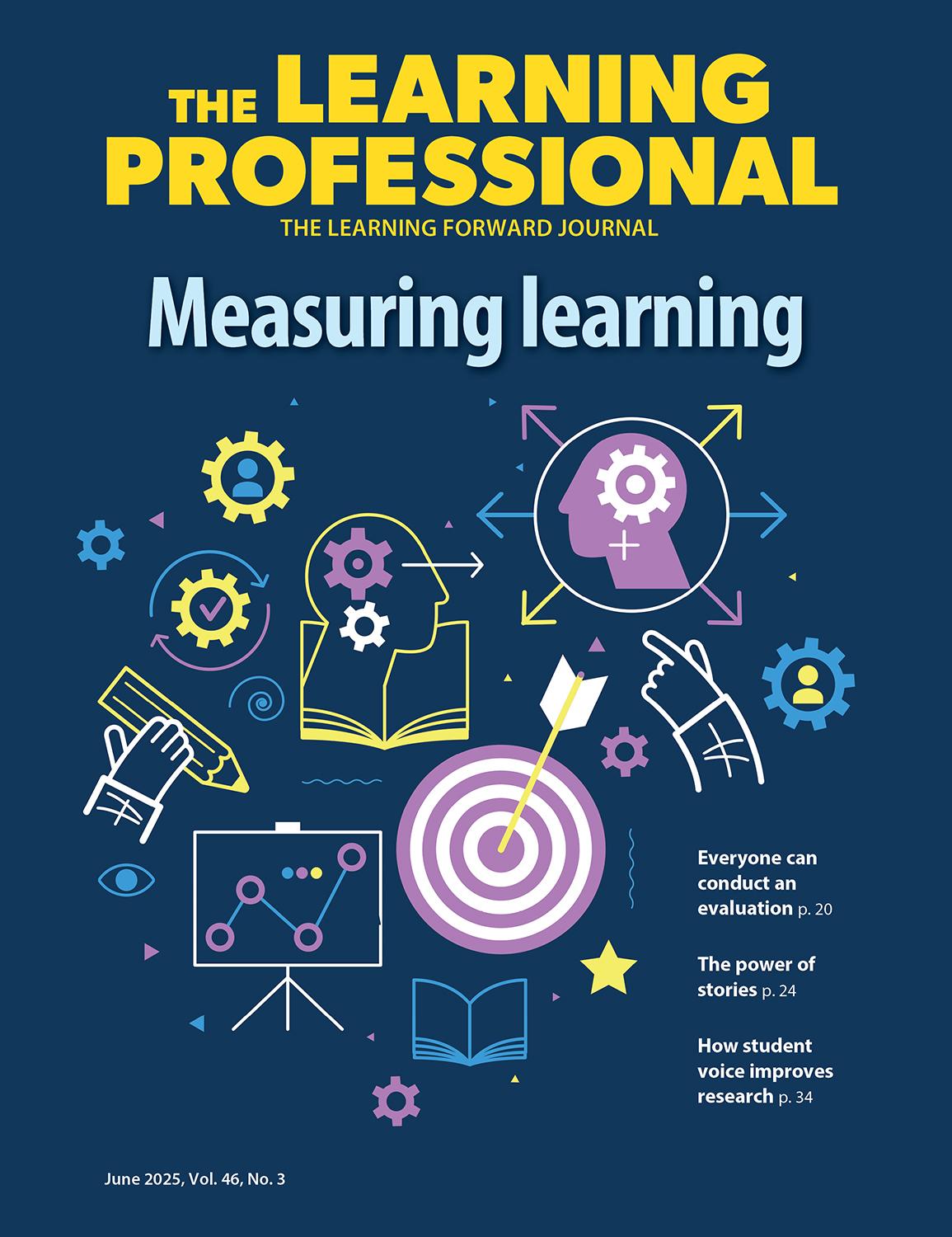Made for transfer: The collaboration teacher model
A tool to scale up positive practices
By Learning Forward
August 2017
Vol. 38 No. 4
Read the remaining content with membership access. Join or log in below to continue.
Sed ut perspiciatis unde omnis iste natus error sit voluptatem accusantium doloremque laudantium, totam rem aperiam, eaque ipsa quae ab illo inventore veritatis et quasi architecto beatae vitae dicta sunt explicabo. Nemo enim ipsam voluptatem quia voluptas sit aspernatur aut odit aut fugit, sed quia consequuntur magni dolores eos qui ratione voluptatem sequi nesciunt. Neque porro quisquam est, qui dolorem ipsum quia dolor sit amet, consectetur, adipisci velit, sed quia non numquam eius modi tempora incidunt ut labore et dolore magnam aliquam quaerat voluptatem.
Jonathon Saphier (saphier@rbteach.com) is founder and president of Research for Better Teaching, a professional development organization dedicated to improving classroom teaching and school leadership.
Tool 1
tool 1: collaboration teacher model
Use the following tool to guide your use and critique of the Collaboration Teacher Model. It helps a great deal if the administrator takes the course and practices the skills as a learner. This empowers any professional development a faculty takes on.
- Administrators, with participation by the course instructor, select 10 people who took the course, show proficiency with the skills, have credibility with their peers, and are willing to open their classrooms to colleagues who want to see what these skills look like in action.
- These 10 teachers are called collaboration teachers. They are willing to share their ongoing process of learning. They are not claiming to be experts in the practice, although they are probably pretty good.
- Give collaboration teachers an extra full day of professional development face-to-face to increase their expertise. They practice the skills in small groups, facilitated by the original instructor of the professional development course.
- In addition, the collaboration teachers receive a half-day of coaching in their own classroom by the instructor or other qualified expert. This coaching includes the expert coach videoing the teacher and analyzing the video that day with the teacher for presence, absence, or missed opportunities for the 24 Making Student Thinking Visible elements on p. 68. This is nonjudgmental, objective feedback based on evidence. Some sort of objective instrument needs to be created for whatever the content of the professional development was that can be used in this way as a checklist.
- The collaboration teachers (or a few of them) present their learning about the new skills at a faculty meeting and give testimony to the positive effects on their students.
- The administrator endorses their work and describes the visits to the collaboration teachers that will be made available to all staff members.
- The administrator sets up a visitation and coverage routine so any teacher who wishes can visit a collaboration teacher when the skills can be viewed.
- During visits, the visiting teacher uses the list of 24 behaviors as a checklist to record evidence of which behaviors occurred during the visit. Such a visit would include shadowing the collaboration teacher when she is in motion interacting with individuals or small groups.
- The visiting teacher and the collaboration teacher have lunch together (or meet at some other chosen time) to review the evidence collected.
- Administrators spread the word and ask if other teachers who took the course would like to visit the collaboration teachers. Administrators facilitate the scheduling and coverage, sometimes providing the coverage themselves.
Source: Making Student Thinking Visible, Research for Better Teaching online course, RBTeach.com.
tool 2: making student thinking visible elements
- Engage student thinking with planned questions.
Teacher-student interaction:
- Call on all.
- Pause … use wait time.
- Avoid judgment.
- Validate confusion.
Reflection question: Are students doing the majority of the talking?
Have students:
- Explain.
- Restate.
- Turn and talk.
Reflection question: Are students elaborating their answers with explanations?
Teacher, be sure to:
- Establish norms, teach prompts.
- Actively listen.
- Revoice.
- Scaffold.
- Persevere and return.
Reflection questions: Are students showing they they are listening to one another? Are they willing to admit confusion or not knowing? Are they challenging each other’s thinking nonjudgmentally?
During lessons:
- Slow down.
- Allow struggle.
- Don’t answer yourself.
- Leave with clues to puzzle over.
Reflection question: Where can I as the instructor improve?
In class discussions, don’t give or confirm answers. Ask students to:
- Agree/disagree.
- Add on.
- Compare thinking.
- Surface discrepancies.
- Revisit previous thinking.
Reflection question: Are the students taking initiative to explain another student’s thinking, including how they might have made an error?
Look for opportunities to:
- Infuse academic vocabulary.
- Record academic vocabulary.
Reflection question: How will I measure outcomes so I can continuously improve this model and its content?
References
Resnick, L.B., Asterhan, C., & Clarke, S. (Eds.). (2015). Socializing intelligence through academic talk and dialogue. Washington, DC: American Educational Research Association.
West, L. & Staub, F. (2001). Content-focused coaching. Portsmouth, NH: Heinemann.
Learning Forward is the only professional association devoted exclusively to those who work in educator professional development. We help our members plan, implement, and measure high-quality professional learning so they can achieve success with their systems, schools, and students.
Recent Issues
NAVIGATING NEW ROLES
April 2025
Whether you’re new to your role or supporting others who are new,...
LEARNING DESIGNS
February 2025
How we learn influences what we learn. This issue shares essential...
BUILDING BRIDGES
December 2024
Students benefit when educators bridge the continuum of professional...
CURRICULUM-BASED PROFESSIONAL LEARNING
October 2024
High-quality curriculum requires skilled educators to put it into...









